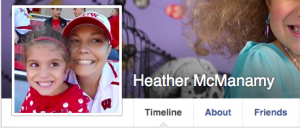Nowadays, most people with Internet access possess a Facebook account. But what happens with these people’s profiles once they pass away? With roughly 428 Facebook user deaths happening every hour, it seems that Facebook is turning into a sort of “digital graveyard”. Heiko Zimmerman investigates how Web 2.0 provides a medium for collective remembrance arguing that because of its interactive capabilities, individual memory can evolve into collective memory, and thus we see the evolution of the memorialized Facebook page.

This is a really interesting phenomenon that even Facebook has brought attention to. In December of 2011, Facebook Safety addressed the deaths by introducing features that would help to “memorialize” users’ accounts through adjusting privacy settings; later on, the Legacy Contact was introduced to allow a family member or close friend to control privacy as well as post new content to the memorialized page.
One memorialized Facebook page that has gone viral is that of Wisconsin woman Heather McManamy. What makes this case particularly interesting is the fact that McManamy had some time to prepare for her own death, as she had been diagnosed with terminal breast cancer. With this knowledge, she handed her Facebook security over to her husband, Jeff McManamy, to handle after her death. Her goodbye post, which she arranged for her husband to post on her behalf as soon as she died, allows for McManamy to contribute to her own memorialization, even after death. In the post, she addresses her family and friends, and thanks her husband for his support. This post was met with a huge outpouring of support from not just family and friends but strangers as well.

Since her death, her husband has remained involved with posting via Heather’s account. He shares memories, leaves messages for Heather, and works to publish letters she left for their daughter. Her account has over fifteen thousand followers, and continues to garner dozens of comments from family, friends, and strangers with each post. Alice Marwick and Nicole B. Ellison have studied how people mourn online and on Facebook in particular, raising questions about the “challenges of publicness” that these social networking sites may raise (386). For example, Jeff McManamy posts here about having to deal with a hacker. Certainly, the relatively new phenomenon of social media mourning will continue to present challenges that should be addressed with improved security settings.
The majority of responses, however, were positive, as evidenced by the comments. Because only Jeff is able to post to Heather’s profile, the comments section becomes a particularly important component in mourning and collective memory. In the comments section, more people are allowed to contribute. On her goodbye post in particular, there are hundreds of comments either offering condolences or sharing memories of Heather. Evidently, Facebook has the capability to amplify the response to people’s deaths, and to allow for more people to mourn and remember.
You can find news articles about Heather’s story here and here.
Works Cited:
Marwick, Alice, and Nicole B. Ellison. “There Isn’t Wifi In Heaven!” Negotiating Visibility On Facebook Memorial Pages. Journal of Broadcasting & Electronic Media 56.3 (2012): 378-400. Communication & Mass Media Complete. Web. 14 Mar. 2016.
Zimmerman, Heiko. “Diverging Strategies of Remembrance in Traditional and Web 2.0 On-Line Projects.” At The Interface / Probing The Boundaries 83. (2012): 151-163. Communication & Mass Media Complete. Web. 14 Mar. 2015.